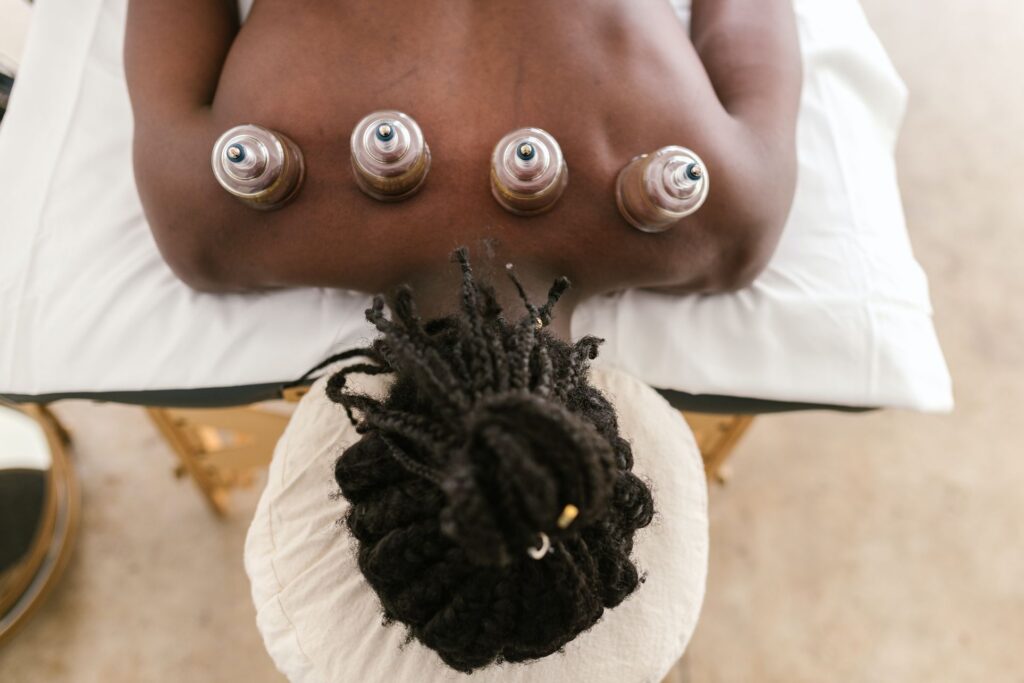Your Handy Guide to Cupping Therapy
physiohealinghands

The ancient Chinese art of cupping therapy is becoming increasingly popular as a natural alternative to traditional medicine. Many people who travel to Asia are familiar with the practice – from the moment you land in China, you can’t help but notice the ‘cupping’ signs posted in the windows of local clinics. The benefits of cupping therapy are many and varied. Initially, practitioners would place flammable products onto areas of your skin and set them alight. When the flame went out, a cup was placed over the area to create a suction. Practitioners will often use pumps to create a suction rather than opting for fire in the 21st century.
Cupping therapy is something that has been practised for thousands of years. For those unfamiliar with the practice, it is based on the idea that cupping therapy can help remove toxins from your body. It is believed that cupping therapy originated in China, but there is evidence that it was also practised in ancient Egypt, Greece, and the Middle East. Cupping therapy is thought to have been used as far back as 20,000 years ago.
The practice has been used in various applications, usually in conjunction with other forms of traditional Chinese medicine. The technique has been used to help people who suffer from certain conditions. Clients opt for this alternative therapy for various reasons. This month, Physio Healing Hands take a look at how cupping can help certain conditions and what to expect if you have an upcoming cupping treatment booked in.
While cupping therapy is not a new form of alternative therapy, there is still much research around the treatment and what it can help with. However, current research suggests that many conditions could be improved with cupping therapy. Here are some conditions that could benefit from cupping therapy.
Back Problems
As cupping promotes a healthy blood flow to your pain areas, this also includes the oxygen your blood carries, making cupping an excellent alternative therapy for back pain. Suction cups can be placed on your pain areas to detoxify the site and increase blood vessels.
Muscle Pain
Tight muscles often have a build-up of toxins. As cupping draws toxins to the skin’s surface, those toxins are released from your muscles. Fresh blood flow is brought to the area, which will help loosen tight muscles and clear any inflammation.
Sport recovery
Many athletes will opt for this alternative therapy to speed up their recovery time between sports. Cupping promotes the expansion of blood vessels, allowing more blood to flow to the area, promoting healing to the site.
Other conditions
Other conditions that have been reported to improve after cupping therapy include skin concerns (acne), blood pressure, mental health including anxiety and depression, and various allergies. However, more research needs to be completed into these conditions.
What to expect after your first cupping treatment
Cupping is sometimes performed alongside acupuncturist treatments. However, this is not necessary, and your physiotherapist will be able to advise you on the best treatment plan for your needs. For best results, you may also want to fast or eat light meals 2-3 hours before your cupping sessions.
During a cupping session, you can expect the following:
You will go through your symptoms with your practitioner so they can build a better understanding of what you would like to gain from cupping therapy. Once you are settled and comfortable, your practitioner will explain the type of cupping therapy they will be using and will begin your treatment. During the session, you may experience some discomfort, but this is not likely to last long. Once your suction cups have been placed, your practitioner may leave you for a short while for the therapy to do its work, depending on how long your cups are going to stay on. This is generally for a short period of around 3 minutes.
After your cupping session, you can expect the following:
Once your suction cups have been removed, you may notice your skin turning red or showing slight signs of bruising. This is completely normal as your blood vessels have been expanded to promote more blood flow to the areas. There are few side effects of cupping therapy, and most will disappear shortly after your treatment. Your practitioner will explain all aftercare to you during your session. You will likely have red marks for a short period of time, and you may feel dizzy or experience flu-like symptoms as the toxins leave your body. There is always a small risk of infection with cupping therapy. However, this risk is minimal if you work with a qualified and safe practitioner like Physio Healing Hands.
This may also interest you:
Book your cupping therapy treatment today with Physio Healing Hands
Whether you have aches and pains, are a keen sportsman who needs to reduce recovery times, or are looking for an alternative therapy to help your health and wellbeing, cupping could be the treatment you are looking for. At Physio Healing Hands, we offer this treatment in a warm and welcoming space where you will feel comfortable from the moment you join us.
Our team are qualified in many forms of alternative therapies, including cupping and acupuncture. They will be able to offer you a bespoke treatment plan based on your concerns and what you would like to achieve when you visit us. Book an initial consultation today and see how we can support you.
Our Newsletter
Dig deeper into physiotherapy, health, and related topics that you care about by signing up for our newsletter.
